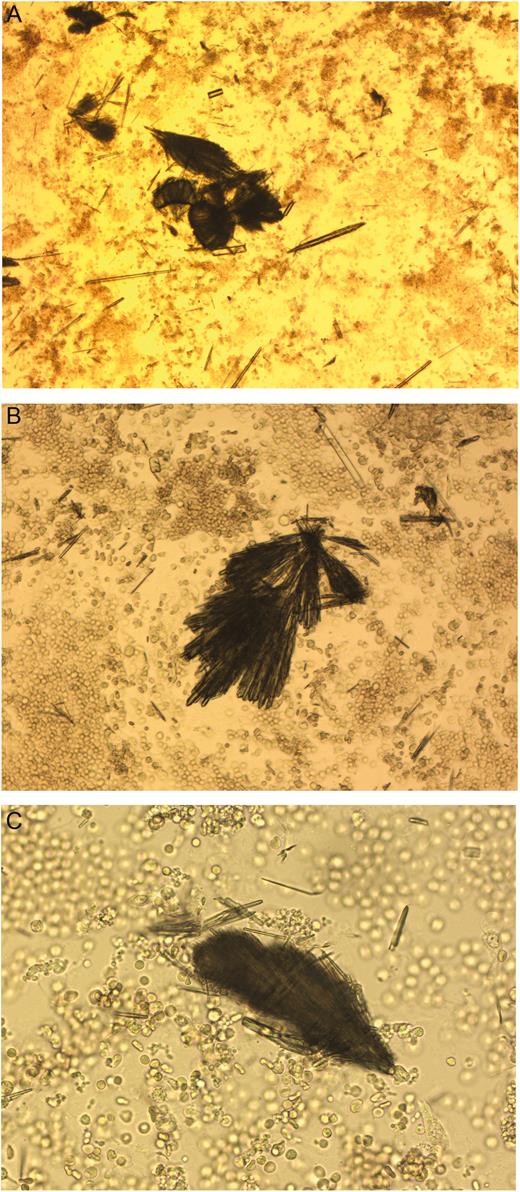-
PDF
- Split View
-
Views
-
Cite
Cite
Tim C Neefs, Jacobien C Verhave, Corine Bethlehem, Robert-Jan Hassing, Crystal Clear Haematuria, Clinical Infectious Diseases, Volume 65, Issue 12, 15 December 2017, Pages 2154–2155, https://doi.org/10.1093/cid/cix595
Close - Share Icon Share
(See page 2153 for the Photo Quiz.)
Diagnosis: Amoxicillin crystalluria. The elimination of amoxicillin is predominantly done by the kidneys and consists of 10% glomerular filtration and 90% tubular excretion. Low urinary flow, low urine pH, and high amoxicillin doses are risk factors for crystallization of amoxicillin in the urine. This may be accompanied by macroscopic haematuria (Figure 1a). The crystals can be observed on bedside urine examination (Figure 1b). Microscopically there is an organization of needle-shaped or broom-brush structures (Figure 2a, 2b, and 2c) [1]. Haematuria and acute kidney injury are likely to be caused by direct tubular damage by the crystals. Ampicillin, which is closely related to amoxicillin, could also result in crystal formation [1, 2]. Other drugs that may cause crystalluria are ciprofloxacin, acyclovir, indinavir, and vitamin C [3]. In particular, crystalluria may appear in case of overdosing or in an oliguric patient. In our patient, withdrawal of amoxicillin resulted in disappearance of the haematuria. Kidney function normalized within the following days.


Microscopic examination (magnification 400×) of the urine sediment with needle-shaped crystals.
Note
Potential conflicts of interest. All authors: No reported conflicts of interest. All authors have submitted the ICMJE Form for Disclosure of Potential Conflicts of Interest. Conflicts that the editors consider relevant to the content of the manuscript have been disclosed.
References




